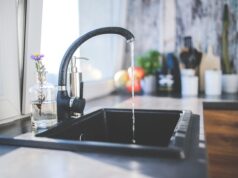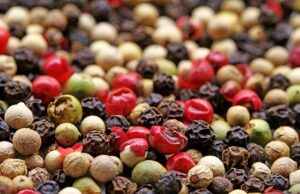Contents
The Unsung Heroes: An Overview of the Underappreciated Kitchen Sink Pipes
The kitchen sink pipes in our homes play a vital role in our daily lives, yet they often go unnoticed and underappreciated. These unsung heroes quietly ensure that our kitchens remain clean and functional, allowing us to carry out various tasks effortlessly.
Whether it’s washing dishes, preparing meals, or simply getting a glass of water, the kitchen sink pipes act as a crucial intermediary, ensuring smooth water flow and efficient drainage. Without them, our kitchens would become chaotic and inconvenient, making it difficult to accomplish even the simplest of tasks.
Kitchen sink pipes typically consist of different components, including supply pipes, drain pipes, and traps. Supply pipes deliver water from the main source to the sink, while drain pipes carry away used water and waste. Traps, on the other hand, prevent foul odors and gases from entering our kitchens by creating a water seal.
These pipes are often made of durable materials, such as PVC (polyvinyl chloride) or stainless steel, ensuring long-lasting performance. Regular maintenance is vital to keep them in optimal working condition, avoiding potential clogs, leaks, or corrosion that could disrupt their functionality.
Despite their fundamental role, the significance of kitchen sink pipes is often overlooked until a problem arises. It is crucial to recognize their importance and care for them appropriately to avoid unnecessary inconvenience and costly repairs in the future.
Next time you turn on the tap or clean your dishes, take a moment to acknowledge the unsung heroes hidden beneath your kitchen sink. These humble pipes deserve our appreciation for their reliable service and contribution to our daily lives.
The Unsung Heroes: An Overview of the Underappreciated Kitchen Sink Pipes
The Importance of Kitchen Sink Pipes
Kitchen sink pipes may not be the most glamorous aspect of our homes, but they play a crucial role in our daily lives. These pipes are responsible for carrying both clean water into the sink and removing wastewater. Without them, we wouldn’t have the convenience of running water at the kitchen sink.
Types of Kitchen Sink Pipes
There are several types of pipes commonly used in kitchen sinks. Here are a few examples:
- Supply Pipes: These pipes bring clean water from the main water supply to your sink. They are typically made of copper, PEX, or CPVC.
- Drain Pipes: Drain pipes, also known as waste pipes, are responsible for carrying wastewater away from the sink. They are usually made of PVC or ABS plastic.
- P-Traps: P-traps are curved sections of pipe located beneath the sink. They prevent sewer gases from entering your home by creating a water barrier.
Maintenance and Common Issues
Like any other part of your plumbing system, kitchen sink pipes require regular maintenance to ensure they function properly. Here are a few tips to keep them in good condition:
- Regular Cleaning: To prevent clogs and foul odors, it’s essential to clean your pipes regularly. You can use a mixture of baking soda and vinegar to remove buildup.
- Avoiding Grease Disposal: Never pour grease or oil down the sink as they can solidify in the pipes and cause blockages.
- Prompt Repairs: If you notice any leaks or strange smells coming from your kitchen sink pipes, it’s crucial to address the issue promptly. Ignoring problems can lead to more extensive and costly repairs.
Professional Plumbing Services
Although some basic maintenance and repairs can be done by homeowners, it’s always recommended to consult a professional plumber for complex issues. They have the necessary expertise and tools to handle any plumbing problem effectively.
Learn More About Kitchen Sink Pipes
If you’re interested in delving deeper into the world of kitchen sink pipes, visit www.example.com. This website provides comprehensive information on various types of pipes, DIY maintenance tips, and more.
Frequently Asked Questions
Q: What are kitchen sink pipes?
A: Kitchen sink pipes are the plumbing pipes that connect the kitchen sink to the main sewage system. They are responsible for carrying waste water out of the sink and into the sewer or septic system.
Q: Why are kitchen sink pipes considered unsung heroes?
A: Kitchen sink pipes are often underappreciated because they work silently behind the scenes, ensuring proper drainage and preventing clogs. Without these pipes, our kitchens would be a mess and we would have to deal with stagnant water and foul odors.
Q: How do kitchen sink pipes work?
A: Kitchen sink pipes typically consist of a trap, a P-trap or an S-trap, which prevents sewer gases from entering the kitchen. The trap retains a small amount of water to form a seal. When water is drained from the sink, it flows through the pipes and into the sewage system due to gravity.
Q: What are some common issues with kitchen sink pipes?
A: Some common issues with kitchen sink pipes include clogs caused by a buildup of grease, food particles, or foreign objects, leaks due to corrosion or loose connections, and bad odors caused by trapped debris or sewer gas. Regular maintenance such as cleaning the pipes and being careful with what goes down the sink can help prevent these problems.
Q: Can I fix kitchen sink pipe issues on my own?
A: Minor issues such as simple clogs can often be resolved by using a plunger, a drain snake, or a homemade mixture of vinegar and baking soda. However, more complex issues or major repairs should be handled by a professional plumber to ensure proper fix and prevent further damage.
About Kitchen Sink Pipes
Understanding the Function of Under Sink Pipes
Underneath your kitchen sink, you’ll find various pipes that play a crucial role in the overall plumbing system of your house. These pipes are responsible for carrying water to and from the sink, as well as managing wastewater disposal.
The Different Types of Kitchen Sink Pipes
There are several types of pipes found under the kitchen sink:
- Supply Pipes: These pipes bring clean water from the main water line into your sink. They are usually made of copper, PVC, or PEX material.
- Drain Pipes: Drain pipes carry the used water and debris away from the sink. Common materials used for drain pipes include PVC and ABS.
- Trap: The trap is a curved section of pipe that prevents sewer gases from entering your home. It also helps in catching any small items that may accidentally be dropped down the drain.
- Waste Pipe: The waste pipe connects your sink’s drain to the main sewer line. It is usually made of PVC or ABS and is larger in diameter compared to other pipes under the sink.
Maintaining and Troubleshooting Under Sink Pipes
Keeping the pipes under your kitchen sink well-maintained is essential to prevent leaks and other plumbing issues. Here are a few tips:
- Regularly check for any signs of leakage or water damage.
- Clear out any debris or food particles from the sink to avoid clogging.
- Make sure all connections are tightly secured and sealed.
- If you encounter any plumbing problems, it’s best to consult a professional plumber to handle the repairs.
If you want to learn more about the specifics of kitchen sink pipes, you can visit the Plumbing page on Wikipedia.
The Unsung Heroes: An Overview of the Underappreciated Kitchen Sink Pipes
Summary:
- Kitchen sink pipes play a crucial role in our daily lives, yet they often go unnoticed and unappreciated.
- They are responsible for effectively carrying water to and from our sinks, ensuring proper drainage and preventing leaks.
- Pipes are typically made of durable materials such as copper, PVC, or stainless steel to withstand high water pressure and corrosive substances.
- Regular maintenance, including cleaning and clearing clogs, is essential to keep pipes in optimal condition and prevent costly repairs.
- Understanding the different types of pipes and their functions can help homeowners troubleshoot common plumbing issues.
- Proper installation and positioning of the pipes can also enhance the overall efficiency and functionality of the kitchen sink.
- By appreciating the unsung heroes, kitchen sink pipes, we can ensure a well-functioning and enjoyable cooking and cleaning experience!






























